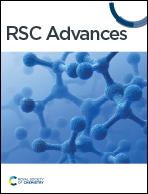Ultra-high Q-factor and amplitude-tunable Fano resonance in vanadium dioxide–silicon hybrid metamaterials
Abstract
As the resonance response in magnetic systems usually occurs at low frequencies, previously known as terahertz high Q-factor resonances, are mainly excited by electrical resonances. In this paper, we present a metamaterial based on vanadium dioxide–silicon arrays capable of achieving a Q-factor of up to 165 198; the ultra-high Q-factor Fano resonance excited by the proposed metamaterial is mainly affected by strong magnetic resonance. The analysis of diffractive coupling theory, electric field, magnetic field and current distribution shows that strong magnetic resonance is mainly realized by coupling localized plasmon resonance with the lattice resonance. Due to the conductivity-tunable nature of vanadium dioxide, the proposed metamaterial features an amplitude tunable function with a modulation depth of 98.8%. The spectral response of the analyte demonstrates the capability of the proposed metamaterial for application as a sensor with a maximum sensitivity of 69.52 GHz per RIU and a figure of merit of 15 456. The ultra-high Q-factor performance and amplitude tunability of the proposed structure can be applied to terahertz devices, such as ultrasensitive sensors, filters and optical switches.



 Please wait while we load your content...
Please wait while we load your content...